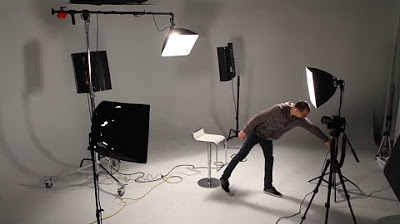The 3 Basics Of Cinematography
Summary
TLDRThis video offers an in-depth look at the fundamentals of cinematography, focusing on three key elements: exposure, lighting, and camera positioning/movement. The speaker explains how to achieve correct exposure through shutter speed, aperture, and ISO, while emphasizing the importance of lighting in creating visual appeal and consistency. The video also discusses the role of camera placement and movement, including the psychological effects these choices have on the audience. Aimed at beginners and enthusiasts, the content serves as a foundational guide for capturing the visual tone that best supports storytelling in film.
Takeaways
- 🎥 Cinematography involves three fundamental elements: exposure, lighting, and camera positioning/movement.
- 🌟 Exposure is determined by the amount of light reaching the film plane, controlled through shutter angle, aperture, and ISO.
- ⚖️ A well-balanced exposure helps convey the tone of the film, such as brighter for comedies and darker for horror.
- 💡 Lighting is crucial for creating an aesthetically appealing image that supports the storytelling.
- 🌞 Consistent lighting is essential, especially when shooting with natural light that changes throughout the day.
- 🎬 Camera placement follows guidelines like the 180-degree rule to maintain spatial relationships between characters.
- 🚶♂️ Camera movement can evoke different emotional responses, influencing audience perception.
- 📐 Understanding basic lighting techniques is vital for achieving professional-looking cinematography.
- 🔄 The 'exposure triangle' (shutter angle, aperture, ISO) must be manipulated to achieve the desired look.
- 🎨 Ultimately, a cinematographer's choices shape the film's visual tone to best suit the story being told.
Q & A
What are the three basic elements of cinematography discussed in the video?
-The three basic elements of cinematography are exposure, lighting, and camera positioning and movement.
How does exposure affect the visual tone of a film?
-Exposure determines the brightness of an image, with brighter exposures typically reflecting a comedic tone and darker exposures setting a scarier psychological tone, especially in genres like horror.
What is the 'exposure triangle' and its components?
-The exposure triangle consists of shutter angle, aperture, and ISO/film speed. These three elements work together to achieve the correct exposure for an image.
What role does aperture play in cinematography?
-Aperture controls the amount of light that enters the lens; a larger aperture (smaller f-stop number) lets in more light, while a smaller aperture (larger f-stop number) reduces the light entering the camera.
What is the significance of consistent lighting in film?
-Consistent lighting is crucial for maintaining exposure and ensuring that shots taken at different times match visually, supporting the continuity of the film.
Why is lighting considered more important than having advanced camera gear?
-Lighting is essential because it significantly influences the aesthetic quality of the image. A well-lit shot can be more visually appealing than one captured with high-end equipment but poor lighting.
What is the 180-degree rule in camera placement?
-The 180-degree rule states that the camera should remain on one side of an imaginary axis between two characters to maintain spatial consistency in the shots.
How can camera movement affect audience perception?
-Different camera movements can evoke various emotional responses from the audience; for example, a shaky handheld camera can create tension, while smooth tracking shots can feel calming.
What are some common mistakes made by beginner cinematographers?
-Beginner cinematographers often neglect the importance of lighting and focus too much on the camera equipment itself, leading to less visually appealing shots.
What resources does Skillshare offer for aspiring cinematographers?
-Skillshare provides a range of classes on topics related to cinematography, including foundational concepts, lighting techniques, and more, suitable for different skill levels.
Outlines

This section is available to paid users only. Please upgrade to access this part.
Upgrade NowMindmap

This section is available to paid users only. Please upgrade to access this part.
Upgrade NowKeywords

This section is available to paid users only. Please upgrade to access this part.
Upgrade NowHighlights

This section is available to paid users only. Please upgrade to access this part.
Upgrade NowTranscripts

This section is available to paid users only. Please upgrade to access this part.
Upgrade NowBrowse More Related Video

Filmmaking 101 - Three Point Lighting Tutorial

How to Shoot a Narrative Commercial - Cinematography Breakdown

The Basics of Cinematography - Filmmaking for Beginners

The Image Quality Conspiracy (and Why You’re Being Scammed)

Getting the Modern Commercial Look | ZHIYUN MOLUS B500

How to Shoot Better Tracking Shots [Examples of #Trackingshots]
5.0 / 5 (0 votes)